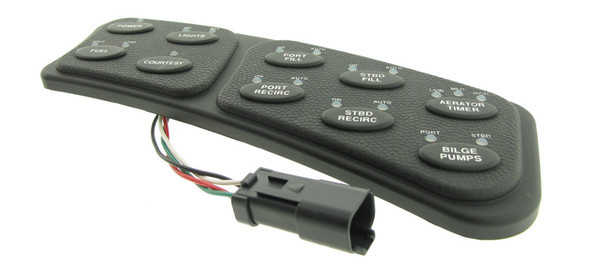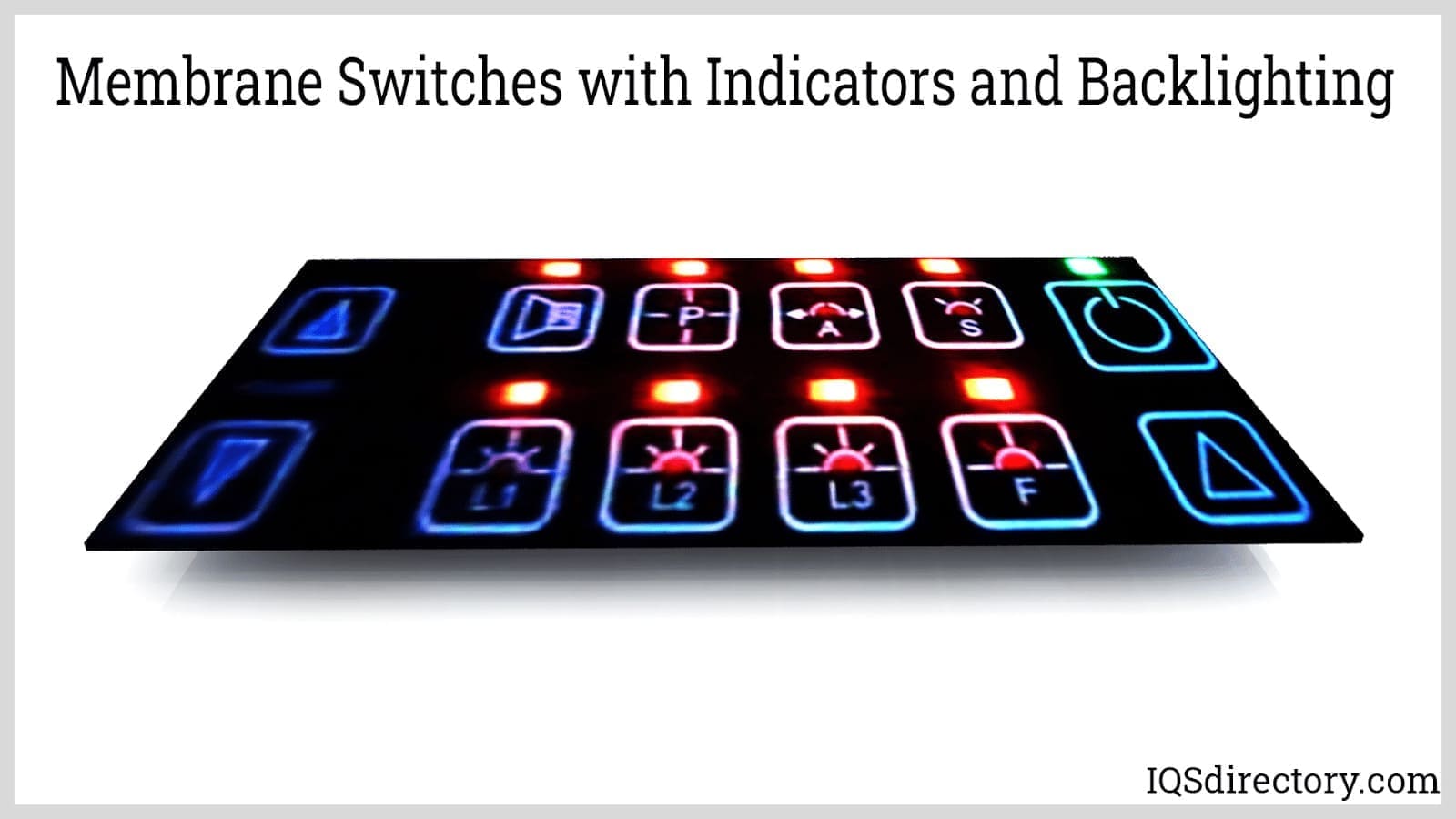The evolution of membrane switch in aerospace technology
Wiki Article
Comprehending the Value of Membrane Layer Switch in Modern Electronic Devices
Membrane layer switches are integral parts in modern-day digital tools. They offer a mix of capability and layout that improves individual communication. Their light-weight and sturdy nature makes them appropriate for numerous applications. As industries develop, the demand for personalization and advanced attributes expands. Comprehending how membrane switches add to advancement exposes their importance in forming the future of electronics. What exists ahead for this innovation?The Basics of Membrane Layer Change Innovation
Although frequently forgotten, membrane switch technology plays a necessary function in the contemporary electronic devices landscape - membrane switch. These tools, composed of numerous layers, act as interface for various electronic products, varying from home home appliances to medical equipment. A typical membrane layer switch contains a visuals overlay, a spacer layer, and a circuit layer, which are diligently set up to develop a functional interface.When stress is related to the overlay, the circuit layer is completed, enabling signals to be transferred to the device. This innovation is recognized for its convenience, allowing personalization in capability, form, and layout to satisfy certain customer demands. In addition, membrane buttons are thin and light-weight, making them appropriate for applications where area is a premium. Their sturdiness and resistance to environmental elements even more enhance their allure, ensuring they can stand up to extreme conditions while maintaining performance. In general, membrane switch innovation is integral to developing user-friendly and effective electronic tools
Key Advantages of Membrane Layer Switches Over
Membrane changes offer a number of essential benefits that make them a favored choice in different electronic applications. Their layout permits a compact form element, enabling suppliers to produce lightweight and sleek gadgets. Furthermore, membrane layer buttons are immune to dust, wetness, and chemicals, which boosts their durability and long life sought after environments. The tactile comments given by these switches can enhance user experience, making them instinctive and easy to operate.Furthermore, membrane layer switches can be tailored with varied graphics and shades, permitting one-of-a-kind branding possibilities. The manufacturing procedure is usually economical, especially for high-volume manufacturing, as it decreases assembly time and streamlines layout. Lastly, membrane layer changes need very little maintenance, contributing to lower general functional costs. These benefits highlight their expanding popularity in modern electronic devices, where integrity and easy to use user interfaces are important.
Applications Across Numerous Industries
The flexibility of membrane switches allows their widespread adoption across various industries. In the clinical field, they are commonly used in analysis devices and client monitoring systems, supplying a sturdy interface immune to pollutants. The automobile market utilizes membrane buttons for control panel controls, boosting individual experience with smooth designs that stand up to extreme conditions. In consumer electronic devices, they act as control board for gadgets such as microwaves and coffee makers, offering a straightforward user interface that is very easy to tidy. The aerospace field employs membrane layer buttons in cabin controls, where reliability and space effectiveness are critical. Furthermore, the industrial sector leverages these buttons in machinery and control systems to ensure durable procedure in requiring settings. This wide variety of applications underscores the versatility of membrane switches, making them indispensable components in enhancing functionality and individual interaction across diverse technological landscapes.Customization and Layout Flexibility

Future Fads in Membrane Layer Switch Over Growth
Arising patterns in membrane switch development show an expanding focus on improved performance and integration with smart technologies. As customer need for a lot more advanced electronic devices rises, suppliers are concentrating on producing membrane switches over that not just serve basic functional functions but also include functions like touch sensitivity, backlighting, and haptic feedback.Furthermore, advancements in products are expected to improve durability and ecological resistance, making membrane switches appropriate for diverse applications in sectors such as health care, automobile, and consumer electronic devices. The integration of capacitive touch modern technology is likely to become a lot more prevalent, enabling sleeker styles and improved individual interfaces. membrane switch.Additionally, the surge of the Net of Points (IoT) is prompting the growth of membrane switches over that can communicate wirelessly with various other devices, enhancing interconnectivity. In general, the future of membrane layer switch innovation appears encouraging, driven by advancement and the pursuit of straightforward servicesRegularly Asked Questions
Exactly How Do Membrane Layer Changes Contrast to Traditional Mechanical Buttons?
Membrane layer switches, being a lot more space-efficient and supplying a sleek layout, contrast with conventional mechanical buttons that provide tactile responses. The previous typically include customizable graphics, while the latter normally guarantee sturdiness and integrity in various applications.What Materials Are Frequently Made Use Of in Membrane Switch Production?
Membrane layer buttons are typically produced utilizing products such as polyester, polycarbonate, and published conductive inks. These products give responsiveness, longevity, and adaptability, making them suitable for various applications in electronic devices and interface.Can Membrane Switches Be Repaired or Reused?
Membrane layer switches can commonly be fixed, particularly if small concerns emerge, such as adhesive failing or surface area damage. However, complete reuse is typically restricted because of use and potential destruction of products in time.
Just How Do Environmental Factors Influence Membrane Switch Over Performance?
Ecological aspects, such as humidity, temperature level, and exposure to chemicals, substantially influence membrane layer switch performance. Severe conditions can bring about this content degradation, impacting responsiveness and durability, inevitably jeopardizing the capability of the device in numerous applications.What Is the Typical Life-span of a Membrane Layer Switch?
The typical life-span of a membrane switch usually ranges from 1 to 5 million actuations, depending upon variables such as usage frequency, ecological problems, and the materials utilized in production, impacting toughness and efficiency longevity. A common membrane switch is composed of a visuals overlay, a spacer layer, and a circuit layer, which are carefully set up to develop a functional interface - membrane switch.When pressure is applied to the overlay, the circuit layer is finished, permitting signals to be sent to the device. The tactile comments supplied by these buttons can boost customer experience, making them intuitive and easy to operate.Furthermore, membrane layer buttons can be tailored with varied graphics and shades, permitting for one-of-a-kind branding opportunities. As consumer demand for more sophisticated electronic devices increases, producers are focusing on creating membrane switches that not just offer standard functional functions however likewise integrate features like touch level of sensitivity, backlighting, and haptic feedback.Furthermore, innovations in products are anticipated to boost longevity and ecological resistance, making membrane layer changes appropriate for diverse applications in industries such as health care, auto, and customer electronic devices. The integration of capacitive his comment is here touch modern technology is most likely to end up being a lot more common, permitting for sleeker layouts and enhanced customer interfaces.Additionally, the surge of the Net of Points (IoT) is triggering the development of membrane switches over that can interact wirelessly with other tools, improving interconnectivity. Membrane buttons, being a lot more space-efficient and using a sleek layout, comparison with conventional mechanical buttons that supply tactile responsesReport this wiki page